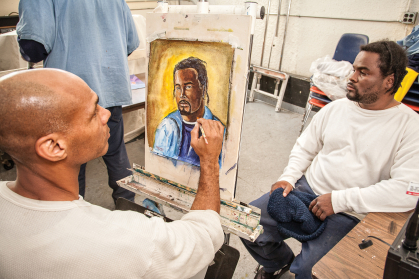Art From the Inside

Growing up in a mill town in southwest Ohio in the 1980s, as manufacturing dried up and union-paying jobs vanished, Nicole Fleetwood witnessed escalating encounters between law enforcement and family members, neighbors, and friends living in her African American community—all caught in the dragnet of economic devastation. Some were arrested without explanation and detained; others were convicted and sentenced. Everyone seemed to have an ominous story about a run-in with the law.
“There has never been a time in my life when prison didn’t hover as a real and present threat over us,” writes Fleetwood, a professor of American studies and art history at the School of Arts and Sciences, in Marking Time: Art in the Time of Mass Incarceration (Harvard University Press, 2020). The book, which won the 2021 National Book Critics Award for criticism in March, is Fleetwood’s reaction to her long-felt grief for the people she knew, and knew of, who were shipped off to prison. At first, she was reluctant to pursue the project, keenly aware of the personal pain it would summon. But after hosting a series of well-received lectures and public presentations, Fleetwood was emboldened and forged ahead.
Based on scores of interviews with incarcerated people and their families, prison staff, activists, and other observers, Marking Time, nine years in the making, explores the importance of creating art as a means to survive incarceration. Fleetwood also turned to the growing scholarship in critical prison studies, Black culture theory, and visual culture. “[This] amazing group of currently and formerly incarcerated artists and their loved ones and allies … inspire me every day,” Fleetwood writes. “Our freedom is interdependent.”